In Her Own Words
On Research & Writing
In 2007, the year The Chinese Alchemist was published, an ezine called The Motivated Writer ran an interview with Lyn. This is an excerpt, used here with the permission of the publisher, Su Kopil. It focuses on the use of setting in her crime novels.
Question: How do you go about picking a setting for your book? Does the setting come first or the story idea?
Answer: My series has an archaeological focus, and each book in the series is set in a different place, so I look for a setting that has exciting history/prehistory/mythology first. It also has to be a place that is a bit exotic, which is to say that the setting is something of a mystery in and of itself for both Lara and the reader. I usually spend about five months researching both the history and the setting, until I find something – either a historical or prehistorical event, or an artifact perhaps – that gives me the idea for the plot, and provides a kind of historical framework for the action in the present. I don’t start writing until I know enough about both the history and the setting that I can write the novel without stopping to look information up all the time.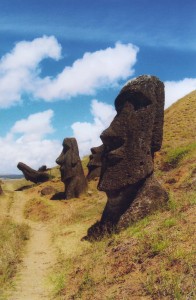
Just to give an example: I have always been interested in paleolithic goddess figures – very ancient carvings of women, probably goddesses. By very ancient, I mean as old as 25,000 years. These figures have been found in an arc from Siberia through France. I chose Hungary as the setting for The Magyar Venus (a fictional paleolithic carving of a goddess) for very practical reasons, because it had the right kind of terrain for the discovery of such an old carving – limestone caves that were inhabited that long ago. In terms of the plot, though, these carvings have been the subject of controversy – are they goddesses, or just fertility symbols? Well, the answer sort of depends on who is looking at them. So the book became a story about women and how they have been regarded, and about how our personal biases affect how we see things. And of course, a woman dies early on under suspicious circumstances!
Q: Can you tell us about some of your research trips? Is there one that stands out in your mind? Any funny/interesting anecdotes or mishaps?
A: I travel to all the places I write about, and have had some great, and funny, adventures. I was offered sex on an altar stone in Malta, for example. Apparently this altar stone provides the ultimate sexual experience. (I wouldn’t know, as I declined.)
Travel to research a murder mystery is a different kind of travel. You spend a lot of time in dark, creepy places, and looking for police stations and hospitals. There is not a lot of sitting on a beach gazing at the water. Still, I find when you tell people what you’re doing, they’re almost universally interested and helpful. I’ve had archaeologists taking me into looters’ tunnels under pyramids in Mexico, for example, by flashlight, late at night, to show me where you could ambush so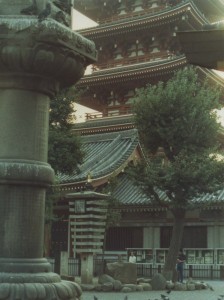 meone and rip their heart out, Aztec style. When I got hopelessly lost in Malta trying to find the police station while researching The Maltese Goddess, a group of very elderly Maltese walked me to the gate. In China, I told someone I met the kind of setting I was looking for, and she went to great lengths to find a suitable place and to arrange for me to see it – which was not easy.
meone and rip their heart out, Aztec style. When I got hopelessly lost in Malta trying to find the police station while researching The Maltese Goddess, a group of very elderly Maltese walked me to the gate. In China, I told someone I met the kind of setting I was looking for, and she went to great lengths to find a suitable place and to arrange for me to see it – which was not easy.
In terms of frightening experiences, not that many. I was in a car accident in China while researching The Chinese Alchemist. The driver who caused the accident was in the army, and he sent the police away when they came. I was out in the countryside, far from Beijing, in a country that has a different idea of justice from what I’m used to, and I was not comfortable at all. In the end, we (my guide and driver and I) were told to scram, and forget it ever happened. I am happy to say there is an unpleasant character in the book who reminds me of that army guy. Never cross a mystery writer!!
Q: How do you go about researching/exploring a setting? (interviews, photographs, etc.)
A: I usually write about settings I’ve visited before, so I have an idea that they will work as the setting for the crime novel I have in mind. I do revisit them, taking careful notes and photographs. By the time I travel to the place, I have a very good idea of the plot, and so I make a list of the kinds of things/places I need to find. I talk to as many local people as I can, just trying to get the flavor of the place. In terms of the archaeology, I read everything I can get my hands on, and also talk to experts in the field. I’ve found archaeologists to be very helpful in explaining their research. Some have sent me papers they’ve written, others have invited me to visit their projects.
Q: How do you keep your findings fresh in your mind? Do you have any methods for organizing your notes/pictures?
A: I’d like to say my notes and photos are well organized, but that would not be true. I research both the place and the archaeological background until I am really comfortable with the material, and then I write. I can picture the place in my mind very easily, and I know exactly where I want to set certain scenes. If I need to refer to notes and photographs, I do, but I try to write through, going back to check details after I’ve completed draft one. If you are always having to look things up, the flow of the narrative in your plot is bound to suffer.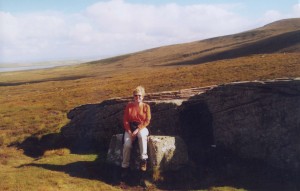
Q: If the essence of place is in the details, how do you know which to include and which to leave out?
A: One of the things about writing mysteries is that you cannot have long chunks of description, because that tends to stop the plot action, and mysteries are all about plot. It’s one of the things all new mystery writers tend to do – put too much back story in the early going, too much description. The rule is always: show, don’t tell. So you are looking for the aspects of the setting that can be part of the plot, in a way, not just a passive backdrop. You set a scene where the way the action unfolds reveals something important about the setting, and the setting itself adds to the action. Or perhaps the way the character reacts to the setting says something about both the place and the person. I always tell the writers I work with that if you find long blocks of copy in your work with no action or dialogue, then take them out and find some other way to address the setting.
One of the techniques I use to avoid long descriptive passages is to find something in the setting that is almost a shorthand for the place -– the scent of night jasmine to convey the exotic, a particular sound in a marketplace that captures the energy of the place etc. You do have to use all your senses, not just the visual, in conveying a setting – how the place smells, the typical sounds, tastes, the food, the taste of the air in your mouth, and what things feel like to the touch.
Q: Do you consider the setting another character? If so, what techniques do you use to make it come alive in the story?
A: Yes, I do consider the setting to be a character. The device I use is the mythological idea of the journey. My sleuth, antique dealer Lara McClintoch, goes somewhere she doesn’t know very well, she gets drawn into a murder investigation in some way, and she has to solve it. She is a stranger in a strange land, and like all mythic heroes, she is put to a series of tests – attempts on her life, suspicion falling on her rather than the real culprit, and so on – and, of course, she succeeds. To do so, she has to understand the place in which she finds herself. So the setting is part of the mystery, and some understanding of it is necessary to solve the murder. Lara meets a lot of strangers, sees a lot of different events and places, and she gradually filters through them, eliminating some, consolidating her impressions, to understand what has happened.
Q: Any last words of wisdom about writing or life you care to share?
A: I’ve been a library writer-in-residence twice now, and I always give the same advice to the aspiring authors that I work with in these programs. It’s very simple: read and write. You should read the kind of books you want to write, subjecting them to critical analysis. What is it I like about this book? What has the author done really well? How has the author accomplished this? What hasn’t been as well done? etc etc etc.
You learn to write by writing. You can take courses, but you really learn to write by doing it, over and over again. Don’t get discouraged if your first attempt isn’t published. There are all kinds of successful authors who were turned down in their first few attempts. Consider rejection character building, and keep writing.
On Heritage & Character
Around the time of the publication of her first book, The Xibalba Murders, in 1997, Lyn answered some questions about how she came to write an archeological mystery, whether Lara is a lot like her creator, and the importance of heritage in her writing.
Question: How do you pronounce Xibalba, and what is it anyway?
Answer: Shee – bahl – bah, with the emphasis on the last syllable. For the ancient Maya, it was the underworld, the place of darkness, where the Lords of Death lived. You can read all about it in Popol Vuh, an ancient Maya text, which tells the story of mythological Hero Twins, who survive many trials and tribulations and ultimately defeat the Lords of Xibalba.
Q: What gave you the idea to set a mystery in the Yucatan?
A: I’ve been to the Yucatan many times, and every time I go there, I remain amazed at the remains of the civilization of the Maya: the great cities, like Chichen Itza, Coba and Uxmal, the workmanship, the art, their grasp of space, mathematics and time. And I have made a point of learning as much as I possibly can about the history of these places.
A couple of years ago, I was trying to understand the Maya concept of time, which was really very sophisticated. They used something called the Tzolkin, the count of days, a 20-name/13-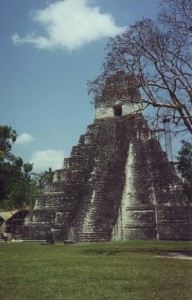 number system. Each of their days had a name and a characteristic associated with that day, much as our weekdays do. However, we’ve largely forgotten the meaning behind our weekdays — Sunday and Moon day, Saturn’s day, Woden’s day, Thor’s day, and so on.
number system. Each of their days had a name and a characteristic associated with that day, much as our weekdays do. However, we’ve largely forgotten the meaning behind our weekdays — Sunday and Moon day, Saturn’s day, Woden’s day, Thor’s day, and so on.
For some reason, I began to wonder whether it would be possible to write a story that would take place over the 20 days of the Tzolkin, where the action would parallel the kind of day it may have been for the Maya. I’m an avid reader of mysteries, so I decided to make it a mystery. Fortunately the Tzolkin contains death days, which are crucial to a good mystery!
Q: There’s a lot of information contained in this book on the ancient Maya. Is it true, and do you have a background in archaeology?
A: I’ve tried to make the history as accurate as I possibly can, allowing for a little literary latitude from time to time. Take the prologue, for example, which begins ‘I am called Smoking Frog, named for one of the greatest warriors in the annals of my people, the conqueror of Uaxactun.’ There really was a Smoking Frog, a warrior credited with inventing a new form of warfare as far as the Maya were concerned. He may have been the brother of the king of Tikal. In any event, he did conquer Uaxactun, a neighboring city/state, and was installed on the throne there, and his victory was an extremely important event in the history of the Maya empire.
I did study archaeology — actually physical and cultural anthropology — at the University of Toronto, and have taken many courses since. But I am not an archaeologist, just someone who has made a lifelong study of the subject, and indeed, in my day job, I work with archaeologists all the time.
But I decided early in my academic career that I didn’t have the patience for it. Archaeology sounds glamorous, the Indiana Jones kind of thing, but in reality it’s hard, occasionally gruelling, and always painstaking work. But it has remained a lifelong interest of mine. Since I left university, I’ve taken courses in archaeology, mythology, ancient history and languages. I even studied Egyptian hieroglyphics for a few years. So writing about archaeology was a natural for me. I don’t know why I didn’t think of it, and do it, sooner.
Q: Tell me about your character, Lara McClintoch. Is she like you?
A: Heavens no! She’s much smarter, braver for sure, and better looking than I am. Younger too. She does, however, share my interest in ancient cultures. At the beginning of The Xibalba Murders she has had to sell her antiques and design shop to buy her way out of a failing marriage. She’s a little bit at loose ends, and after trying to go back to university to take Mesoamerican studies, she agrees on the spur of the moment to go to Merida, Mexico to help an old friend, an expert in Maya antiquities, with a project he has — something to do with a writing rabbit. It’s a strange request, ludicrous is what Lara calls it, but she goes anyway, which just proves she’s more impulsive than I am too.
Q: You talk a lot about history. Is that the most important part of these books to you?
A: I hope people will enjoy the story, and that they will like Lara: I like her, despite her faults, but yes, most of all, I hope people will enjoy the setting and the history, and maybe learn something they didn’t know about ancient history. The ancient world was a fascinating place, and if I can convey a little of this to people, I’ll be very happy.
On Ancient Goddesses
Around the time of publication of The Maltese Goddess, Lyn talked about the importance of setting to her crime novels.
Q: Why choose Malta? What is it about Malta that made it the right setting?
A: Malta has an extraordinary history for such a small island, from prehistoric times right up to the present. It has — and you can still see them — the world’s oldest free-standing stone structures, older than the Great Pyramid, older than Stonehenge.
Many archaeologists believe that these huge megalithic stone temples were devoted to the worship of the Great Goddess over a period of several centuries. A lot of research has been done relatively recently on the subject of Goddess worship in the Mediterranean, and it appears to have been a long and honorable tradition. In fact, worship of the Great Goddess may go back as far as 25,000 years.
In more recent times, the Sumerians had their Inanna, Queen of Heaven and Earth, who later became Ishtar and Astarte. Egypt had Isis, and so on. These goddesses were very powerful deities, and earthly kings of the time received their temporal power through a sacred 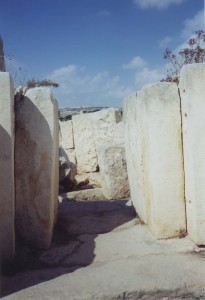 marriage to the goddess.
marriage to the goddess.
This tradition continued throughout the Mediterranean world for many centuries until Greek and Roman times when other gods, primarily male, became dominant. Much of Greek mythology, the tales of Greek heroes and the gods of Mt. Olympus, may well refer to actual events that have to do with the subjugation of centres of goddess worship. The story of the Greek hero Theseus, for example, who slays the Minotaur on Crete and takes Ariadne with him, later abandoning her on the island of Naxos, may well refer to a Greek invasion of Crete which was known as a powerful center of worship of the Goddess. Ariadne may have been a Cretan earth goddess.
I find the history and mythology of this period fascinating, and hope others will as well. What really struck me is how ancient mythology illuminates our modern life. In The Maltese Goddess, people’s relationships, but particularly those between men and women, and the power struggles that surround them, provide much of the motivation of the characters. In this way, the gods and goddesses of the Mediterranean provide a framework for the plot.
Q: What role does setting play in your mysteries?
A: I think setting is very important in a mystery. In the same sense that history becomes part of the plot, so too does the setting.
In The Maltese Goddess, for example, Lara goes to Malta for the first time, and is totally unfamiliar with her surroundings — what I think in Hollywood they call the fish-out-of-water scenario. In that way she is like most of us when we travel to new places.
In terms of her investigations, she can see things or people can tell her things that only make sense to her much later, when she begins to understand the culture a little better. So you have many different plot elements: the modern day mystery, the unknown setting, and the historical and mythological undercurrents. That’s what’s so terrific about the mystery genre. There is so much scope within the convention to explore so many different and, I think, interesting areas.
Q: How much research is involved?
A: To a certain extent I think I’ve been researching these books all my life, although I didn’t know it. I studied physical and cultural anthropology for awhile in my university days, and while I decided it wasn’t the career for me, it’s remained an interest, one might say an obsession, ever since.
I’ve continued my studies on a more informal basis: I take courses on ancient cultures, their languages and mythologies, all the time. (I am one of those odd people who actually think studying Egyptian hieroglyphics in their spare time is fun!)
As well, the world’s archaeological sites have provided the focus for most of my travel since I left school and I’m fortunate now to work with archaeologists, museologists and conservators in my job. I work for a branch of the Ontario government which is responsible for licensing all 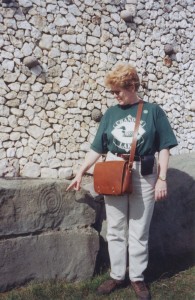 the archaeology done within the jurisdiction and providing technical advice and services to museums and other heritage organizations.
the archaeology done within the jurisdiction and providing technical advice and services to museums and other heritage organizations.
But each book requires its special set of research. I may think I know a fair amount about a certain era in history, but I realize how little I really know when I sit down to write a novel like this.
So, in addition to reading everything I can get my hands on, I consult with experts in that particular area-archaeologists, museologists, conservators, doctors, specialists in their fields – all of whom I’ve found to be very generous about explaining what they know. I also only write about places I’ve been and spent some time. For example, the first time I was in Malta, long before I’d started writing crime novels, I rented a place and stayed there for two months. And now, once I have completed a manuscript, I go back to make sure I have the setting right. People tell me they used The Xibalba Murders as a bit of a tourist guide to the Yucatan this year and so I want to make sure I have that part of it as well as the history right.
On Mythic Ireland
Some more comments from Lyn around the time of publication of The Celtic Riddle.
Q: What was it about Ireland that attracted you to it as a setting for a mystery?
A. I chose Ireland for a number of reasons, not the least of which is that it is a very beautiful and fascinating country. But in addition to the present day setting, I always look for something that is interesting from an archaeological, historical or mythological point of view when I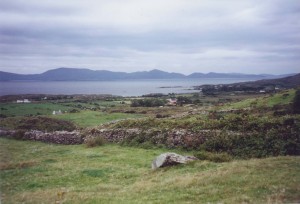 ‘m determining the setting for a mystery. Somewhat to my surprise, Ireland has a really rich mythology — not just leprechauns and shamrocks as we’ve come to think of Ireland — but really wonderful stories about waves of invasions of many different peoples to Ireland’s shores, a pantheon of gods and goddesses, and great mythic battles between the powers of light and the powers of darkness. And what is quite extraordinary, I think, is that it is possible to find the places in present day Ireland where these great mythic adventures were supposed to have taken place.
‘m determining the setting for a mystery. Somewhat to my surprise, Ireland has a really rich mythology — not just leprechauns and shamrocks as we’ve come to think of Ireland — but really wonderful stories about waves of invasions of many different peoples to Ireland’s shores, a pantheon of gods and goddesses, and great mythic battles between the powers of light and the powers of darkness. And what is quite extraordinary, I think, is that it is possible to find the places in present day Ireland where these great mythic adventures were supposed to have taken place.
Q. Can you give an example of what you mean?
A. The Book of Invasions of Ireland, which is a really ancient text, remnants of some very old stories, tell of a people called the Tuatha de Danaan. These people came to Ireland from four magic cities, and when they reached Ireland’s shores fought two great battles called the Battles of Meg Tuired. The locations of these battles are considered to be a place now called Moyturra, which is more/less how Meg Tuired is pronounced, and Cong, which can also be found on the map of present-day Ireland. So these epic battles are rooted in everyday places.
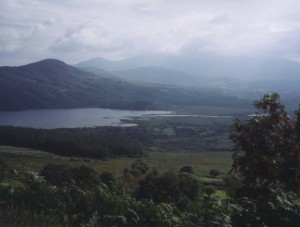 A better known example might be Tara, seat of the High Kings of Ireland. You can visit Tara today, and see remnants of the old fortifications, and see a standing stone called Lia Fail. Lia Fail was supposed to come from one of the Tuatha de Danaan’s magic cities, and roared when touched by the true king of Ireland. So the myths live on in real places if you know what to look for.
A better known example might be Tara, seat of the High Kings of Ireland. You can visit Tara today, and see remnants of the old fortifications, and see a standing stone called Lia Fail. Lia Fail was supposed to come from one of the Tuatha de Danaan’s magic cities, and roared when touched by the true king of Ireland. So the myths live on in real places if you know what to look for.
Q. So how do we get from epic battles to your very modern-day sleuth?
A. The inspiration for the plot of the mystery came from fragments of an old poem that I found while I was researching the Celtic period in Ireland. It was written down perhaps as late as the 12th century by monks, but probably dates back much earlier than that. It is supposed to be a spell chanted by someone called Amairgen of the White Knee when he first set foot on Irish soil, the first Celt to do so.
The contemporary story is about the last Will and testament of a man by the name of Eamon Byrne, who, in an effort to bring his warring family together, has designed a treasure hunt of sorts for his family after his death, where the clues are all taken from Amairgen’s song. Lara is in Ireland with her friend Alex Stewart, who is one of the people named in Byrne’s Will, and is a recipient of one of the clues. The treasure hunt leads to murder, and Lara finds that she and her friends are in danger. I won’t say more than that, because I don’t want to spoil the story, but I hope that readers will not only enjoy Lara’s adventures, but will also become as fascinated as I am by Ireland’s Celtic history and mythology.
